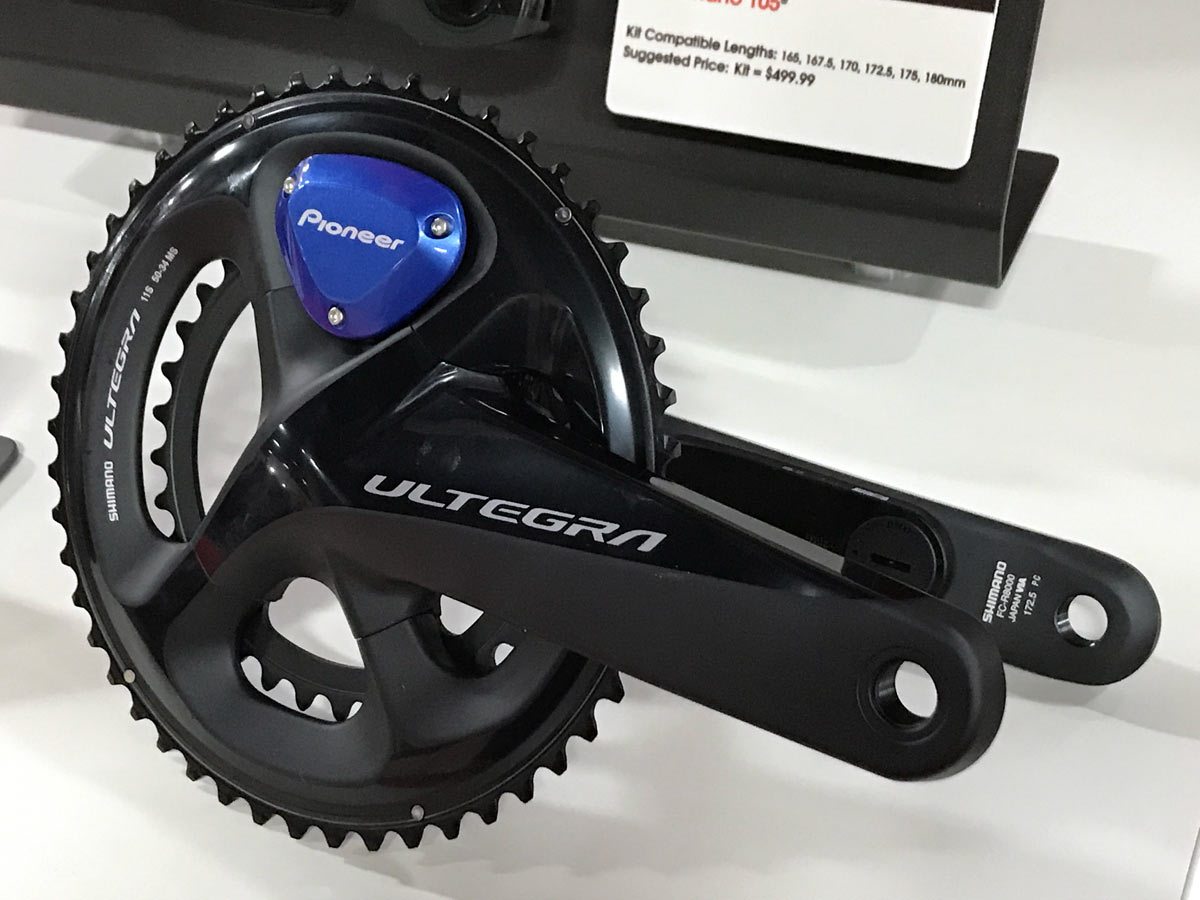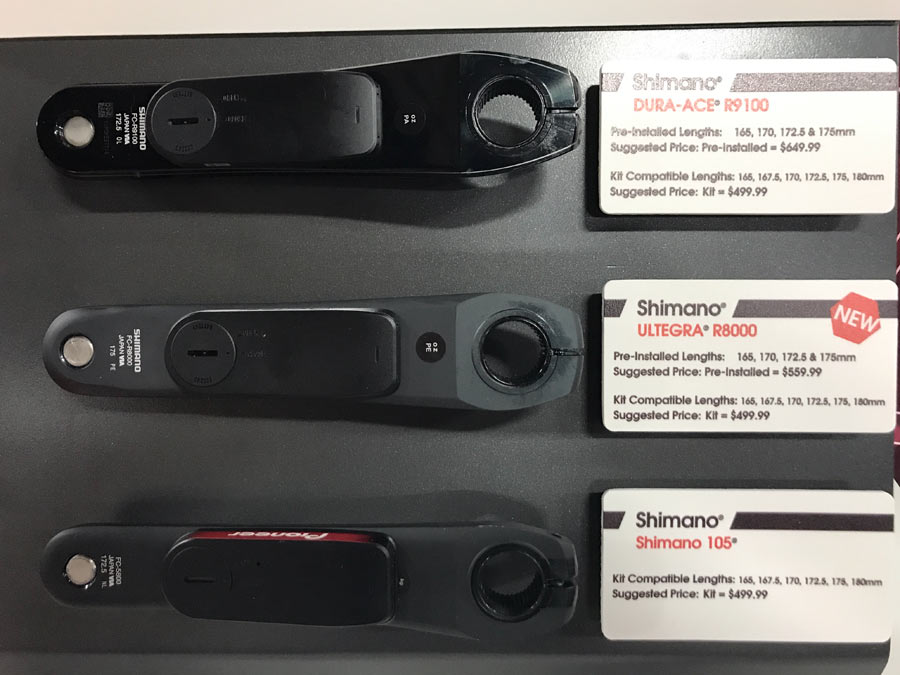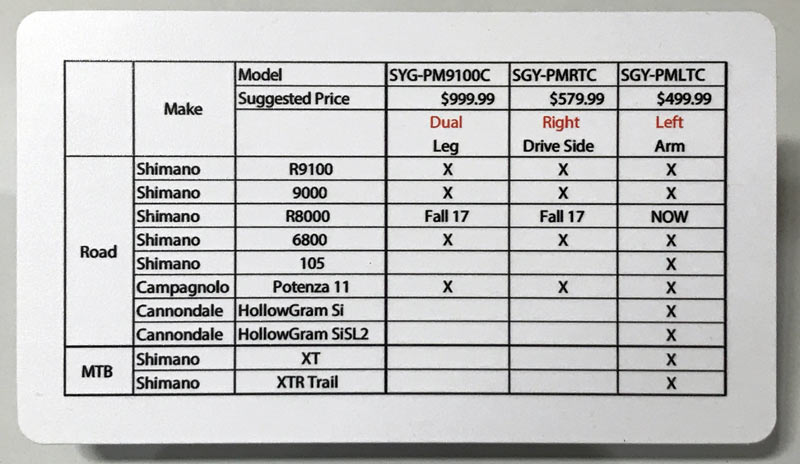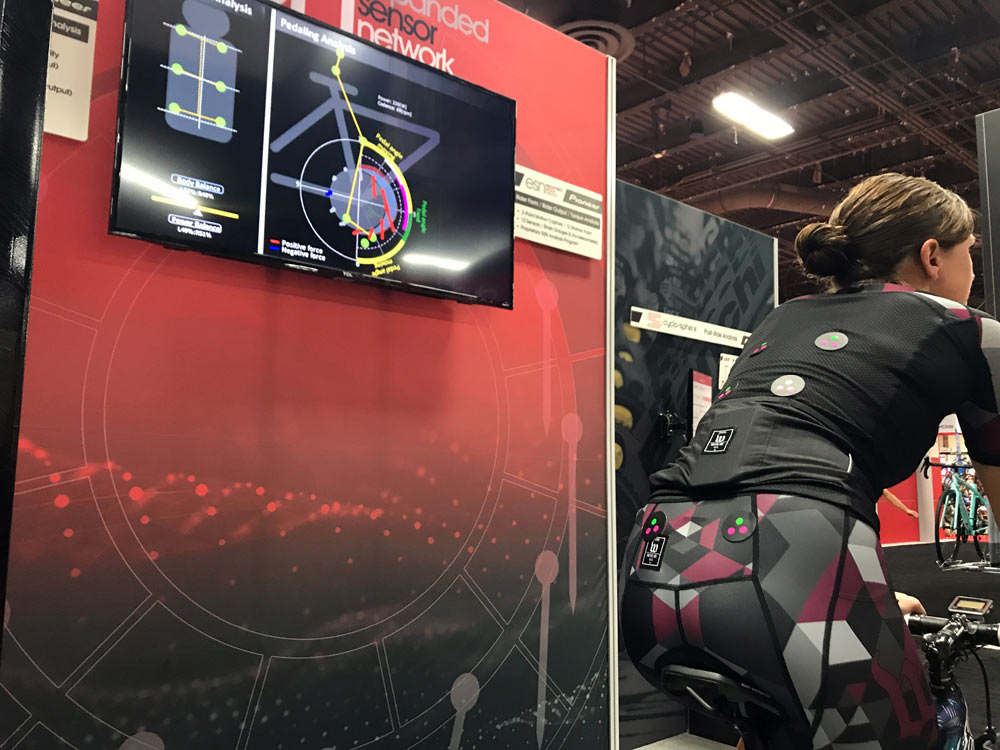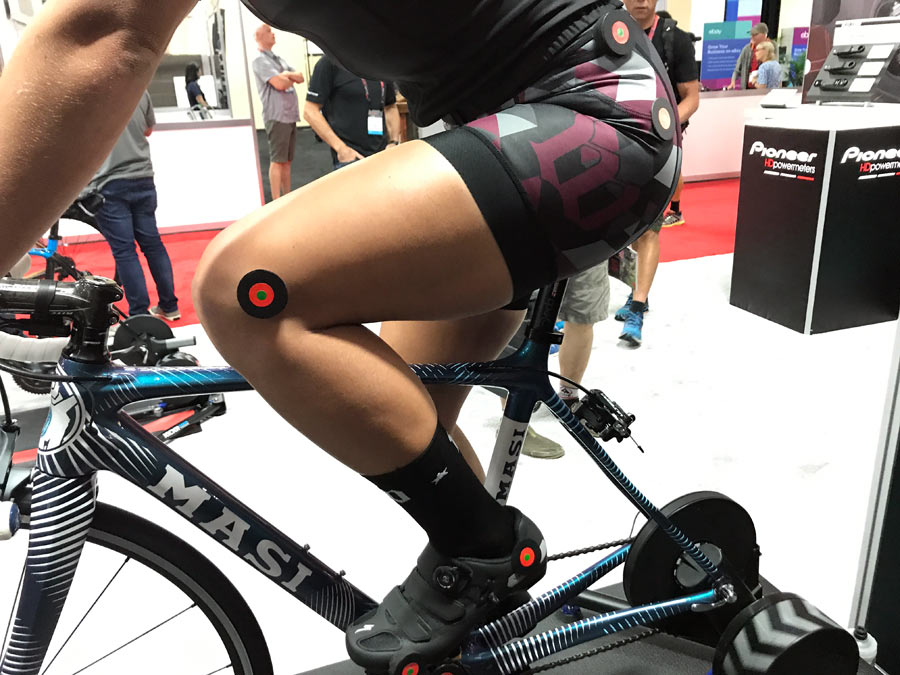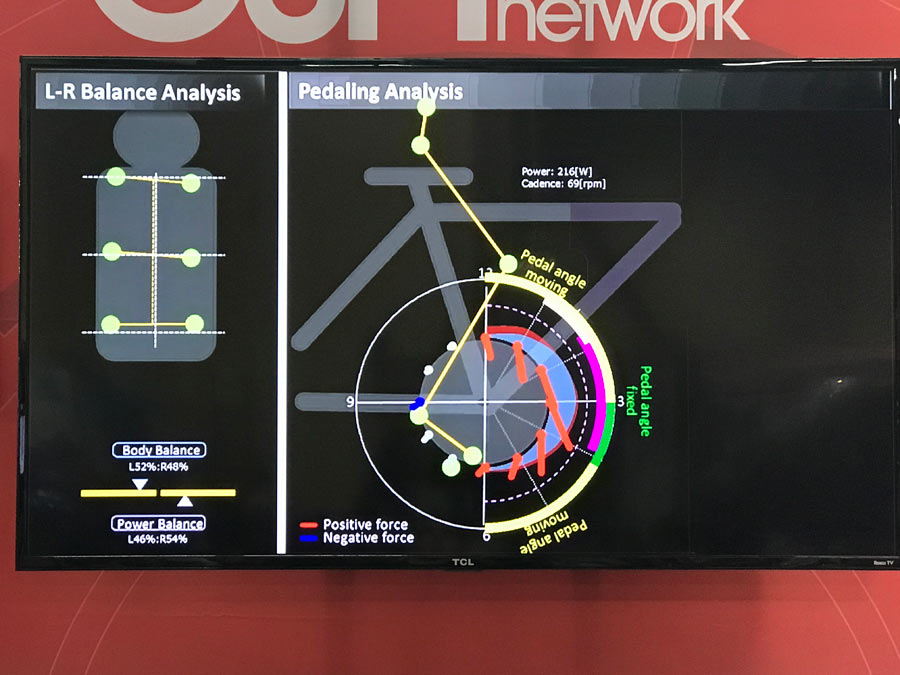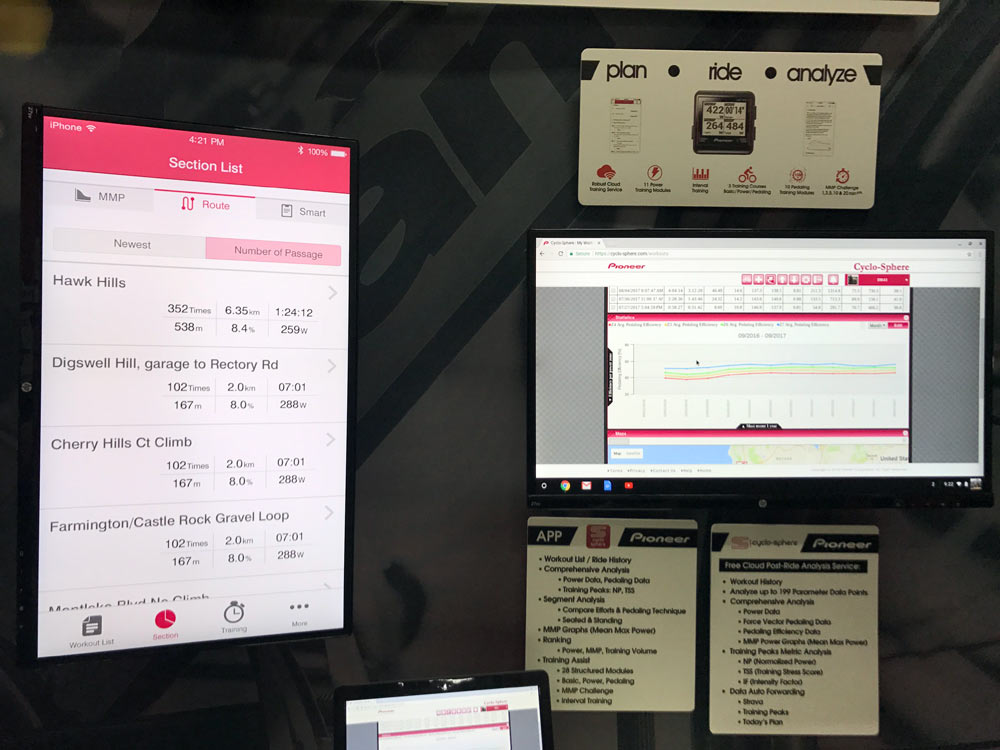Pioneer’s power meters will be available for the latest Shimano Ultegra R8000 and Dura-Ace R9100. It’s available now for single-leg applications on the left crank arm, and follows in December for the dual-leg and pre-installed versions.
It’s worth noting that Pioneer is the only power meter manufacturer that’ll take your existing crank and install their system on it for you, all done in their California-based clean room. And you can always fit your prior generation Shimano crankarm on the new cranks if you’ve already got their power meter on one of those.
In addition to the pricing shown in pic above, it’ll run $1,499 for the Dura-Ace and $1,299 for Ultegra as a complete crankset with the power meters pre-installed on both sides. It’s $999 for the dual-leg kit, which you buy through your favorite bike shop and send in to Pioneer with your existing crankset, and they’ll install it and return. Turnaround time is usually about a week.
Last year they showed off prototype strain gauges and sensors mounted to the bike that helped determine your performance. Now, their ESN (Expamded Sensor Network) system switched to simple sensors stuck onto the rider using motion capture, which means you can use your own bike and components.
It shows rider input to help them improve their torque zone and power output. One particularly interesting metric is the pedal angle, which shows you in real time the part of your stroke where the pedal angle is fixed, which is where you’re most efficient. It also adds body motion analysis to show how you’re twisting and turning and potentially wasting energy. It’s still an engineering project, not out for consumer use, but they’re getting closer to a commercial product for fitters and coaches sometime in the next 18 months.
The new iOS app for their Cyclo-Sphere moves from a cloud based web app to an actual phone app. New features let you create a segment by lapping it manually, or if you keep riding it frequently, it’ll automatically create a smart segment. Then, you can compare the segments from ride to ride to see how your efforts are changing, even how your time and power are different when seated versus standing. It’s still designed as a post ride analysis tool more than a during-ride item, so the idea is to show what works for you and how you’re improving. It also compares your data to an anonymous aggregate, so you know how you stand against other users by age, weight, etc.
